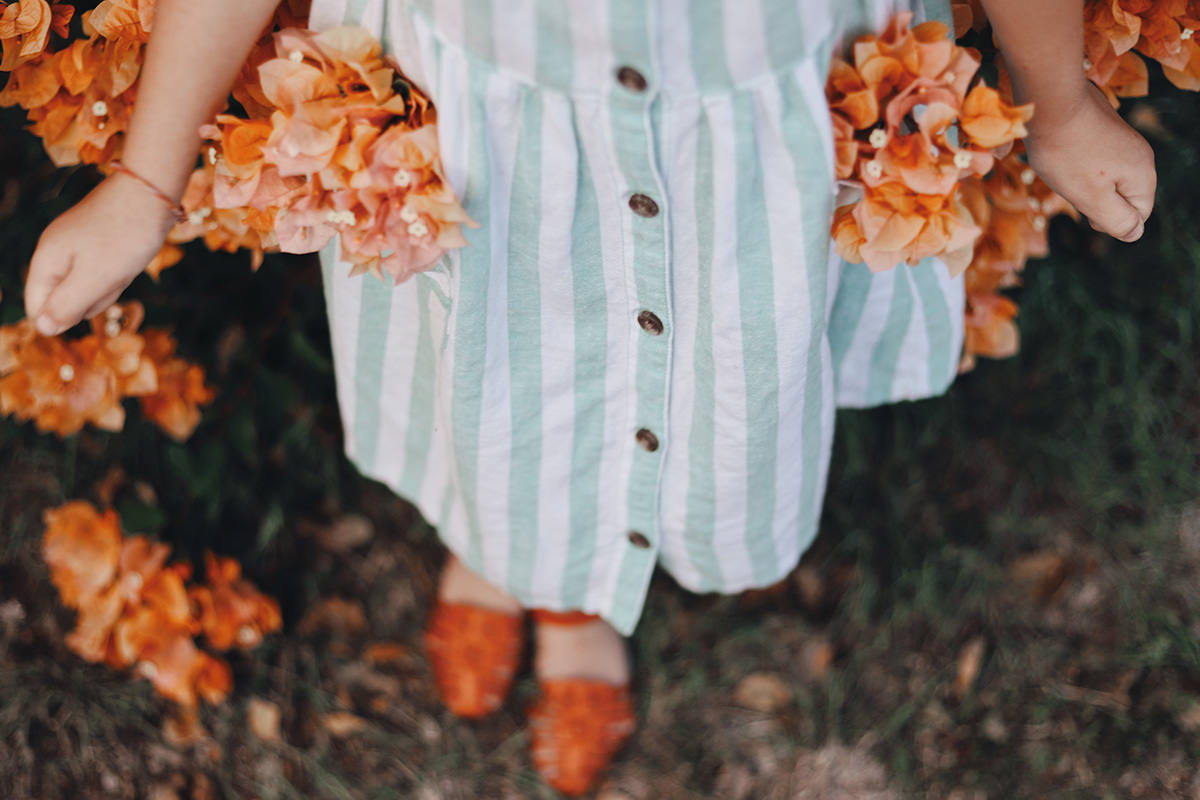When I started dressing tznuis, or modest according to traditional Jewish practice, I ran into three dilemmas: 1. How could I replace a significant chunk of my wardrobe for cheap? 2. How was I going to deal with well-meaning people earnestly asking me “but aren’t you hot in that?” during the summer? And 3. Why couldn’t I find any long skirts with decent pockets?
The first problem was solved by selling my old clothes on Poshmark and using the earnings to score modest finds at thrift stores. The second was solved by simply ignoring people who were just so confused at seeing an observantly Jewish woman existing in public during the summer. But the third problem is still a constant dilemma: Finding dresses and skirts with pockets that don’t cost a fortune is a massive challenge.
My decision to observe traditional Jewish restrictions on modest dress was a response to living in the middle of passive-aggressive West Michigan “nice culture” which dictates that you can be part of a religion and culture that isn’t Christianity, as long as you’re not too weird about it. Well, screw that, I thought. If I’m going to be Jewish, I’m going to be the Jewish person Making Things Weird And Uncomfortable For Everybody Else.
While standards of tznuit (modesty) varies from community to community, the general guidelines for women are covering the elbows, knees, and collarbone, and not wearing pants. Covering the elbows and collarbone is pretty easy: I can emulate ‘90s alternative music culture by either wearing a plaid button-down shirt over a t-shirt, or a long sleeve shirt under one. Finding dresses and skirts long enough isn’t too hard either, even when thrift shopping. But the wholesale lack of pockets is beyond frustrating.
Without pockets, I have to finagle logistics of finding a purse that goes with my outfit, that is also big enough (but not too big) to carry whatever I need. This choreography got especially ridiculous when I worked in an after-school program and had to schlep my purse to work, and then put it in the backpack I was required to carry with me. There’s also having to dig through the purse to grab what I need, the crisis that arises when I accidentally mix up purses, and the fact that when I have pockets, I’m not stuck lugging around extra stuff I don’t need.
Sometimes I’ll browse sites of popular tznuis fashion brands and end up banging my head against the keyboard. Not only are the clothes expensive, but many dresses and skirts don’t have pockets, and the ones that do don’t allow for very much freedom of movement. It appears the high-waisted pair of denim short shorts and the skintight cotton pencil skirt have more in common than meets the eye.
The entire history of pockets in women’s clothes can’t be separated from political and feminist movements. A key turning point for women’s clothing was the French Revolution. Voluminous pockets were replaced with small bags because a woman being able to carry many things in her pockets was considered dangerous: “One way to look at the transfiguration of women’s tied-on, capacious pockets of the mid-eighteenth century into the early nineteenth century’s tiny, hand-held reticule is to consider that this transformation occurred as the French Revolution, a time that violently challenged established notions of property, privacy, and propriety. Women’s pockets were private spaces they carried into the public with increasing freedom, and during a revolutionary time, this freedom was very, very frightening. The less women could carry, the less freedom they had.”
Limiting what women can easily carry limits their opportunities. When our clothes are treated as ornamental instead of functional, what does that say about us?
My friend Mercedes deals with the lack of pocketed tznuis clothes by carrying around a small backpack. While I do sometimes carry a purse or backpack, I shouldn’t have to. I should be able to carry everything I need in the pockets of my clothes, just like men do. I sometimes wonder about all the things I could do with all the time and energy I spend finding clothes with pockets, or taking clothes to the tailor so that they fit me.
Other observant women navigate this dilemma in a variety of ways. Some sew pockets into their clothes, others like me have built-in pocket-finding radar. Shoshana Kordova started wearing dresses and skirts over pants because that combination gave her freedom of movement while also signaling her Orthodox identity while living in Israel (where such markers of identity are important).
Many times the barriers to being observant aren’t big, but rather small death-by-a-thousand-cuts things. What if Chabad houses, known for their campaigns to make mitzvahs more accessible, held classes on how to easily add pockets to skirts and dresses? Or started fundraising campaigns to help offset the cost of buying or tailoring modest clothes?
All women, Jewish and otherwise, religious and secular, and everywhere in between, are expected to carry so many things in our daily lives. And we all deserve functional pockets to make that burden just a little bit easier.
Image via Amy Humphries/Unsplash



